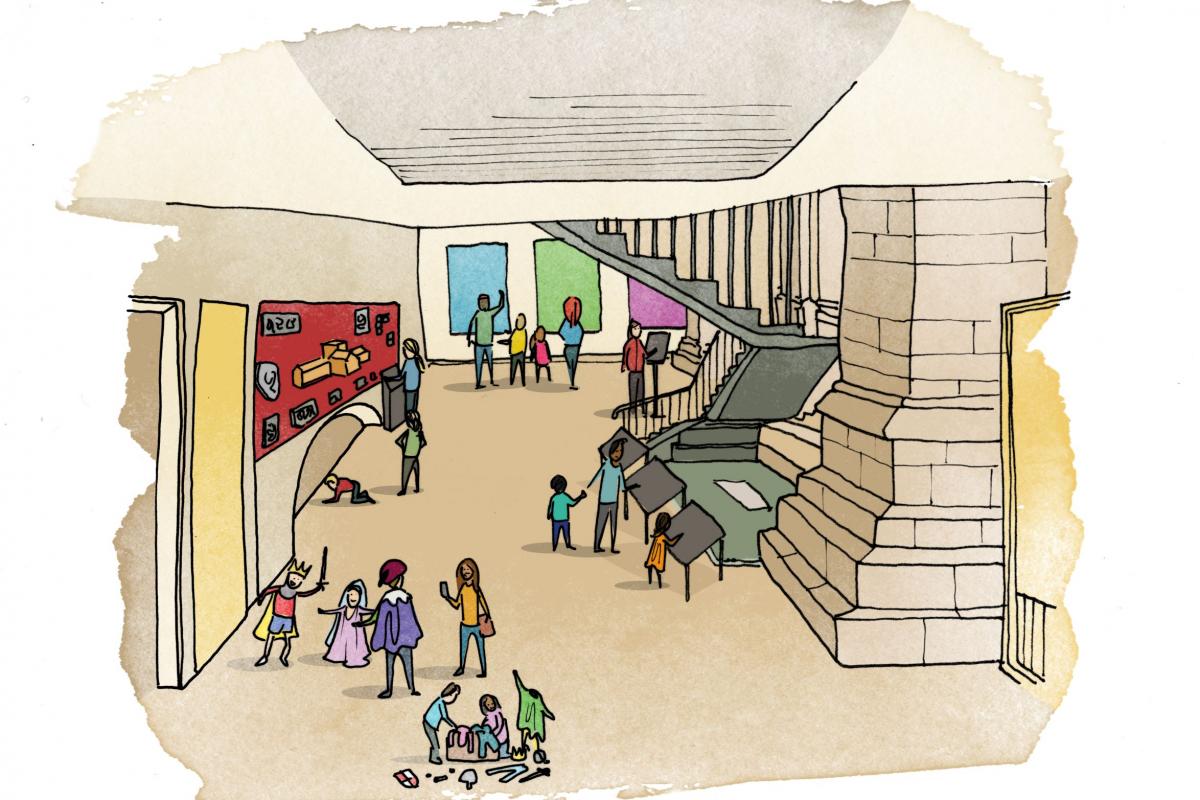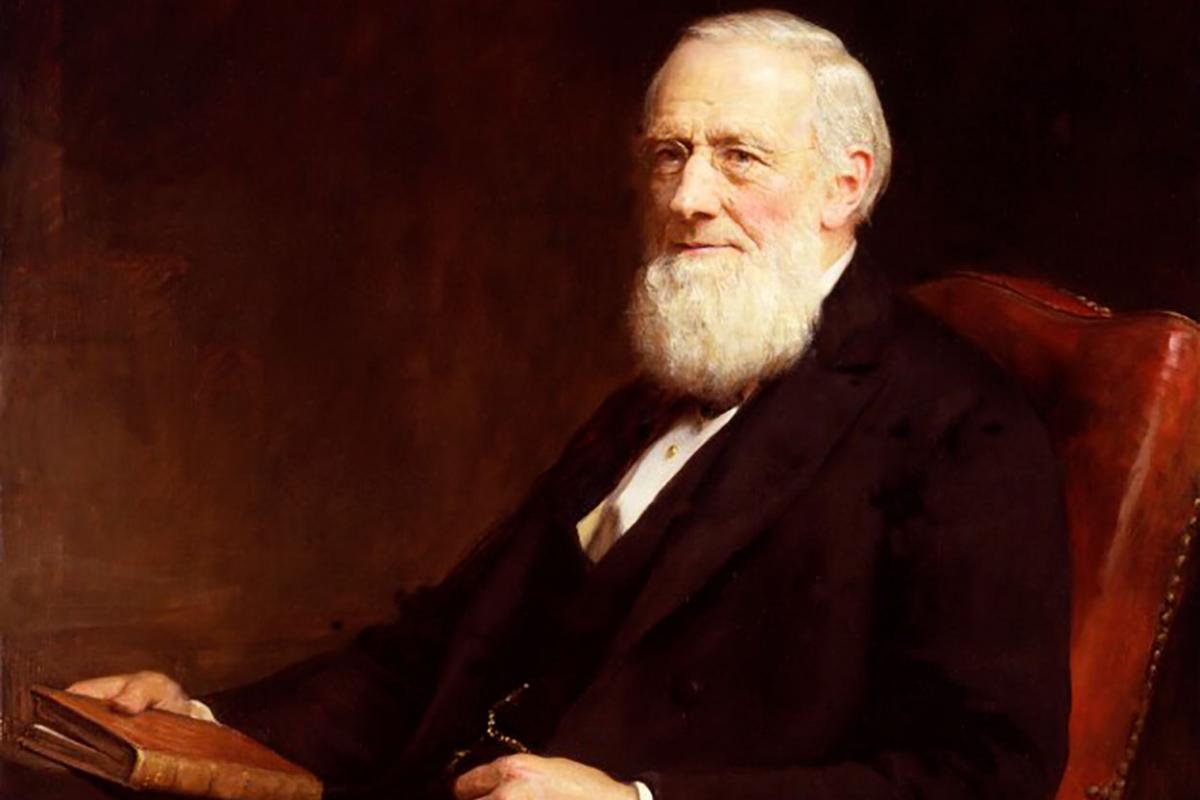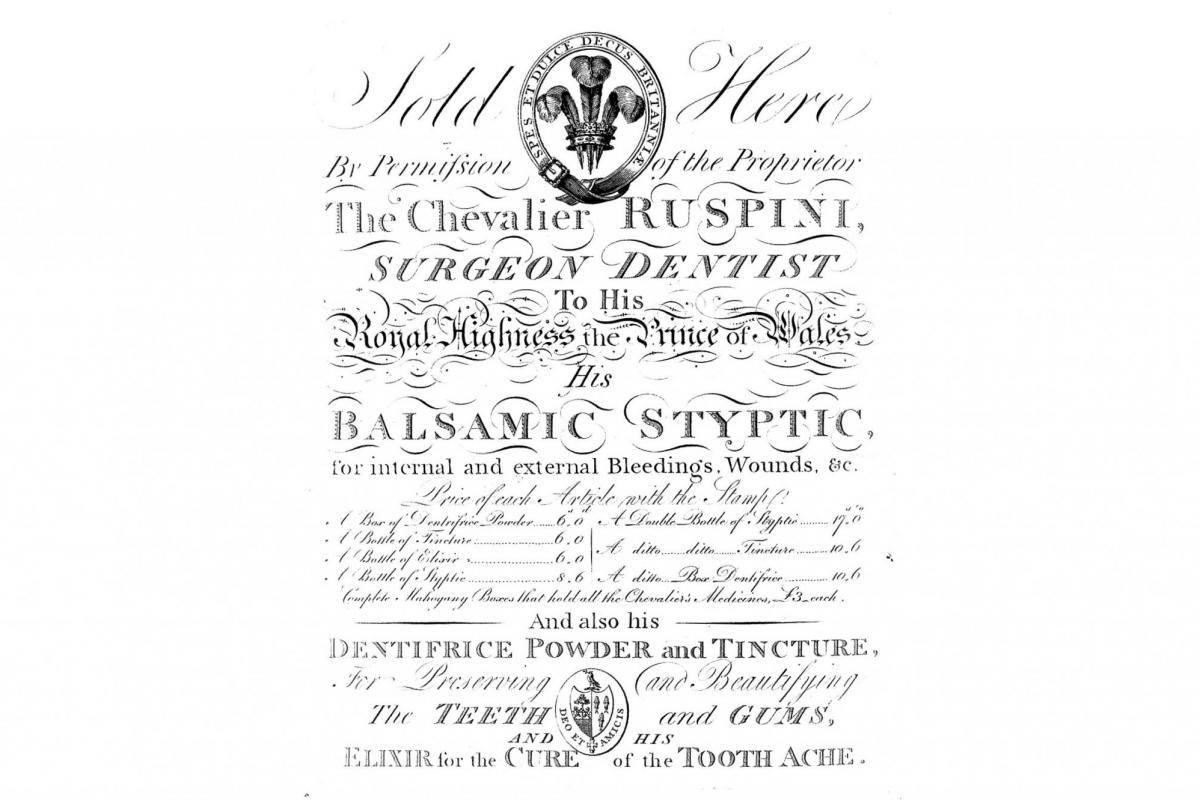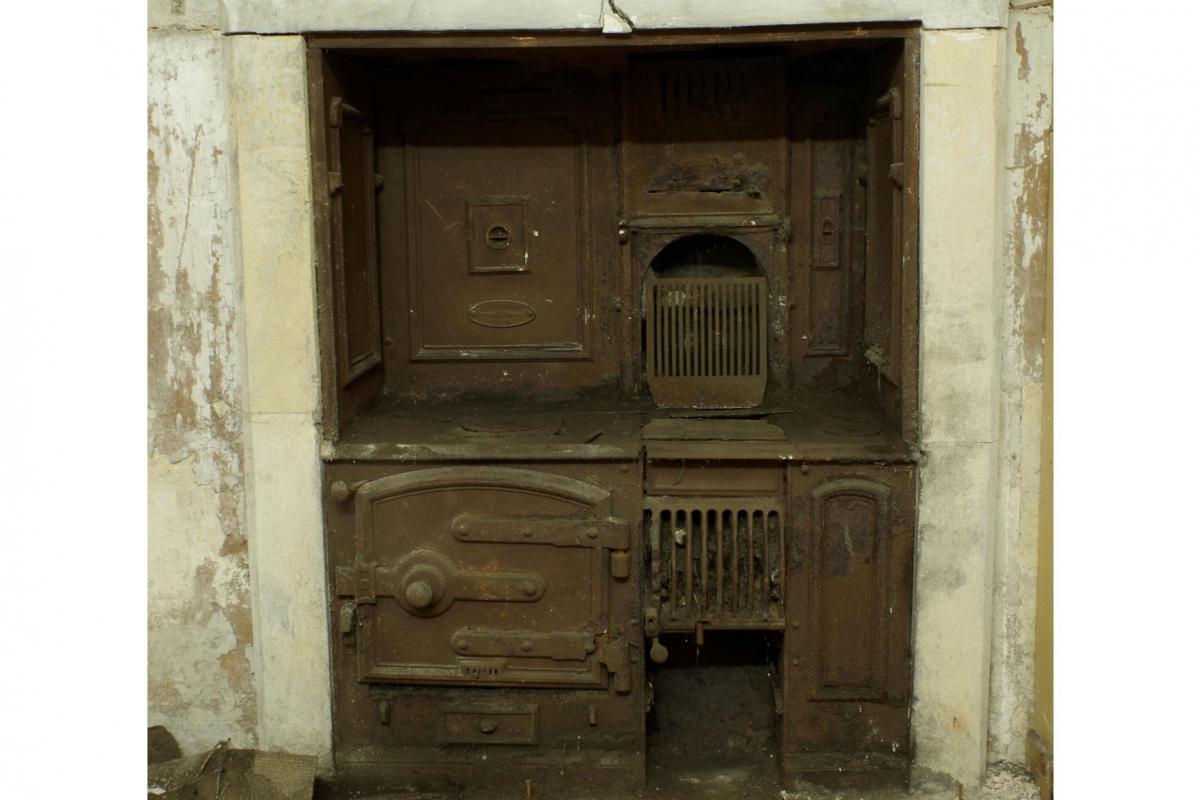As well as repairing Bath Abbey’s collapsing floor, part of the Abbey Footprint Project entails renovating and converting a number of 18th-century vaulted cellars below Kingston Parade and as well as the adjacent terrace row of houses in Kingston Buildings. This will enable the Abbey to create new and improved facilities including a Song School, rehearsal and changing spaces for the Abbey’s choirs and visiting musicians, and a Discovery Centre that will allow visitors to explore the Abbey’s rich history.
Prior to and during the construction work, a team from Wessex Archaeology West undertook a programme of Historic Building Recording and research, which has revealed the history of the buildings and some of the interesting characters that have lived and worked in them over the last three centuries.

Above image: Discover Space © Bath Abbey
Bath Priory and the Kingston Estate
Bath Abbey was constructed in the early 16th century as a Cathedral Priory church. The area to the south of the church was a monastic precinct that contained the cloisters and living quarters of the monks. After the Dissolution of the Monasteries in 1539, the precinct passed through a succession of private owners. By the end of the 16th century, most of the monastic buildings within the precinct had been demolished. The only substantial building to survive was the Prior’s lodgings, which was converted into a private residence, known as Abbey House.
Although there was some new construction within the precinct in the 17th century, large parts of it remained undeveloped until the 18th century. In 1726, the property was inherited by fifteen-year-old Evelyn Pierrepont, 2nd Duke of Kingston-Upon-Hull and became known as the Kingston Estate. The Duke inherited the property just as a construction boom – driven by the increasing popularity of the city as a spa resort – was beginning, and he was keen to make profitable use of his city-centre property.
Development of the northern part of the Kingston Estate began with the demolition of Abbey House in 1755. As the Duke’s workmen began digging down to create new cellars, they uncovered the spectacular remains of the eastern Roman Baths. These remains weren’t exposed for long, and by c. 1762, the eastern baths had been covered over and buried beneath a network of vaulted cellars that supported a grid of new elevated streets (Kingston Buildings, Church Street and Abbey Street), lined with two- and three-storey townhouses and a sumptuous private bathhouse, known as the Duke of Kingston’s Baths.
Isaac Pitman and the 4th Fonetik Institut
Abbey Chambers was constructed c. 1762 as three elegant townhouses, originally known as 1 Church Street and 3–4 Kingston Buildings (later renumbered 6–7). In the 18th and early 19th century, the inhabitants changed frequently; the only long-term occupant was a bookbinder named William Lambert, who was resident c. 1825–69.
In 1874, the Nos. 6–7 Kingston Buildings were purchased by an eccentric publisher named Isaac Pitman (1813–97), who converted the building for use as a print works known as the Forth Phonetic Institute.
Pitman was born in Trowbridge in 1813, and began his working life as a clerk in a local wool mill, then trained as a teacher. After 11 years teaching in Lincolnshire and Gloucestershire, he moved to Bath, where he established a small school. Pitman was fascinated by language and, as a side-line, he and his brother Joseph began developing their own system of shorthand notation, later known as ‘Pitman Shorthand’, which they published in 1837 as Stenographic Sound-hand.

Above left: Abbey Chambers and Kingston Buildings, constructed c. 1762; Above right: Sir Isaac Pitman by Sir Arthur Stockdale Cope (1857 to 1940), National Portrait Gallery is licensed under CC BY.NC.ND 3.0
Their system, which they termed ‘phonetics’, proved very popular and by 1846, Pitman had become successful enough for him quit teaching and become a full-time publisher. His first print works, which he named the ‘First Phonetic Institute’, was set up in his home, but this soon proved too small for his growing business. As a result, he was forced to relocate to larger premises, first in Albion Place, then to Parsonage Lane, and eventually to 6–7 Kingston Buildings. He carried out extensive alterations to the building, which included adding a fourth storey and installing a steam engine and printing press in the adjacent vaults, much to the annoyance of his neighbours, who frequently complained about the noise and vibration it generated.
Privately, Pitman had a diverse range of interests: he was a devout adherent of the Swedenborgian New Church, an early supporter of women’s suffrage, and a fervent advocate for vegetarianism and teetotalism – which he took to include abstaining from tea or coffee! Language remained his most passionate interest, particularly the reform of English spelling, which he considered to be unnecessarily long and wasteful of time – ‘time saved is life gained!’ – being the motto that summed up his philosophy. Pitman’s remedy for this perceived problem was to develop a new simplified system of spelling, which attempted to popularise through numerous books, pamphlets and his weekly periodical the Phonetic Journal, some of which were written using his new form of spelling. He even started spelling his first name as Eizak and painted the words Fonetik Institut on the Church Street elevation of his print works. Although Pitman’s publishing business was a huge success, his spelling reforms never really caught on. A version of them, the Initial Teaching Alphabet (ITA), developed by his grandson, James Pitman, did however become briefly popular in some schools during the 1960s and 70s – much to the confusion of many a child who was taught using it!
Pitman’s business eventually outgrew the Kingston Buildings site, and in 1889 he moved to a purpose-built print works on the Lower Bristol Road. Isaac Pitman died in 1897 and is commemorated on a memorial in the North Aisle of the Abbey. We are, however, left with another small reminder of one of the building’s more eccentric occupants in the street sign on the corner of Kingston Buildings and Kingston Parade that reads KIИSTON BILDIИZ. A detailed history of the Fourth Phonetic Institute can be found in Ward (1998).
After Pitman’s departure, Abbey Chambers was converted into offices for Bath Stone Firms Ltd, who were based there until 1970. The building was subsequently purchased by Bath City Council, and turned into a tourist information centre.
Above left: Memorial to Sir Isaac Pitman; Above right: KIИSTON BILDIИZ street sign
Ruspini: Surgeon Dentist to the Prince of Wales
Nos. 1–2 Kingston Buildings were built at about the same time as Abbey Chambers. The houses were two storeys high with shops on the ground floor and cellars that extended beneath the street. In the late 18th and early 19th century, the shops were occupied by a variety of businesses including grocers, cobblers, milliners, tailors, perfumers and confectioners, but most notably by a dentist named George Ruspini, who had a practice at 2 Kingston Buildings in 1794–5.
George Ruspini was the son and partner of the most famous dentist of the era, Chevalier Bartholomew Ruspini, both of whom served as Surgeon Dentist to the Prince of Wales – future King George IV.
Bartholomew Ruspini was born in Zogno, in the Duchy of Milan, and studied in Bergamo and Paris. It was here that he began styling himself as ‘Surgeon Dentist’ in order to distinguish himself from common dentistry, which was considered to be a fairly disreputable occupation, frequently practiced by blacksmiths and hairdressers. Ruspini moved to England in about 1751 and soon became well-known in aristocratic circles, particularly after George III’s mother, Princess Augusta of Saxe-Gotha, became a client in 1766.
During the 18th century, the influx of cheap slave-produced sugar form British colonies, changed the Nation’s dietary habits: sugared tea and confectionaries became available to the masses, and with it came an epidemic of tooth decay. Although Ruspini is not credited with any particularly groundbreaking new dental techniques, he was one of the earliest writers to highlight the link between sugar consumption and tooth decay, which he described in his 1768 A Treatise on Teeth. Bartholomew Ruspini’s sons James and George shared his appointment as Surgeon Dentist to the Prince of Wales and expanded the family business by setting up their own practices in towns across Britain – no doubt drawn to Bath by the opportunities provided by the rich, and often sickly, patrons of the spa.

Above: Advert for Ruspini's balsamic styptic, Wellcome Collection gallery CC-BY-4.0
Excavation of a primitive 18th-century water closet in the vaults of 2 Kingston Buildings, produced a rich assemblage of late 18th/early 19th-century finds, including two double-ended bone toothbrushes. The toothbrush as we know it today is thought to have been invented in London c. 1780, though tooth brushing didn’t became common practice until the following century. Most double-ended toothbrushes date from the end of the 18th century, a period when they were still a relatively rare, high status object, and although it can’t be proved, it seems plausible that their presence in a water closet sump at No. 2 Kingston Buildings is related to Ruspini’s tenure in the 1790s.
Nos. 1–2 Kingston Buildings were demolished in 1835 to improve the appearance of the Abbey. The cellars beneath the houses were infilled with earth, but the adjacent vaults remained in use. As part of the Footprint Project, the earth-filled cellars of 1–2 Kingston Buildings will be emptied and brought back into use as part of the new Discovery Centre.
8–13 Kingston Buildings
Nos. 8–13 Kingston Buildings were constructed for the Duke of Kingston’s grand-nephew, the 2nd Earl Manvers, in 1819–20. These houses, which were used as residential properties and offices, are two-storeys high with cellars that extend under the street. Apart from a narrow shared yard to the south, there was no external space. Consequently, all the features associated with sanitation, coal storage and laundering were located in vaulted cellars below the adjacent street.
In the 19th and early 20th centuries, the occupants of Nos. 8–13 practiced a diverse range of trades and changed frequently. Notable occupants include Bath’s chief Rabbi Samuel Hermon in 1856–61, and the sculptor Rushton Walker, who carved a temperance monument known as Rebecca’s Fountain on the north side of the Abbey in 1861.
Between 1862 and 1913, No. 8 Kingston Buildings was owned and occupied by the ‘surgeon-chiropodists’ Thomas and Ellen Tuttell. Their chiropody practice was a successful business, which in 1887 helped fund the construction of a two-storey extension above their existing house. In 1895, they purchased the next-door house (No. 9), amalgamated the properties and carried out extensive modifications which transformed the two modest houses into a single large dwelling. Their refurbished house was fitted out in typical Late Victorian style, with ornate marble fireplaces, stained glass windows, and a new coal-fired kitchen range manufactured by Robert Membery Ltd of Bath. The Tuttell family is commemorated on a large stained-glass window on the south side of the Abbey choir, which was commissioned in 1913.

Above left: 8-13 Kingston Buildings, showing the second and third storeys added c. 1887; Above centre: Marble fire surround in 8-9 Kingston Buildings; Above right: Cooking range in 8-9 Kingston Buildings
The programme of historic building recording has shown how the former monastic cloister was developed from the mid-18th century onwards. Abbey Chambers and Kingston Buildings were constructed primarily as residential dwellings, but were increasingly used for commercial purposes in the 19th and 20th centuries. The Footprint Project will transform Kingston Buildings into an integral part of the Abbey, in effect ‘reclaiming’ part of the medieval cloisters for use by the Abbey’s 21st-century worshippers, visitors and staff. To find out more about how to support Bath Abbey’s Footprint Project, visit www.bathabbey.org/footprint, and follow us on Twitter for regular updates @wessexwest #Footprintproject
By Cai Mason, Senior Fieldwork Archaeologist
References
Holland E. 1992 The Kingston Estate within the walled City of Bath: A composite plan of the 1740s showing the work of John Wood and others. Blackett Press, Bath
Davenport, P 2002, Medieval Bath Uncovered. Stroud, Tempus
Ward, O. 1998 ‘Isaac Pitman and the Fourth Phonetic Institute’, Bath History 7, 129–45

